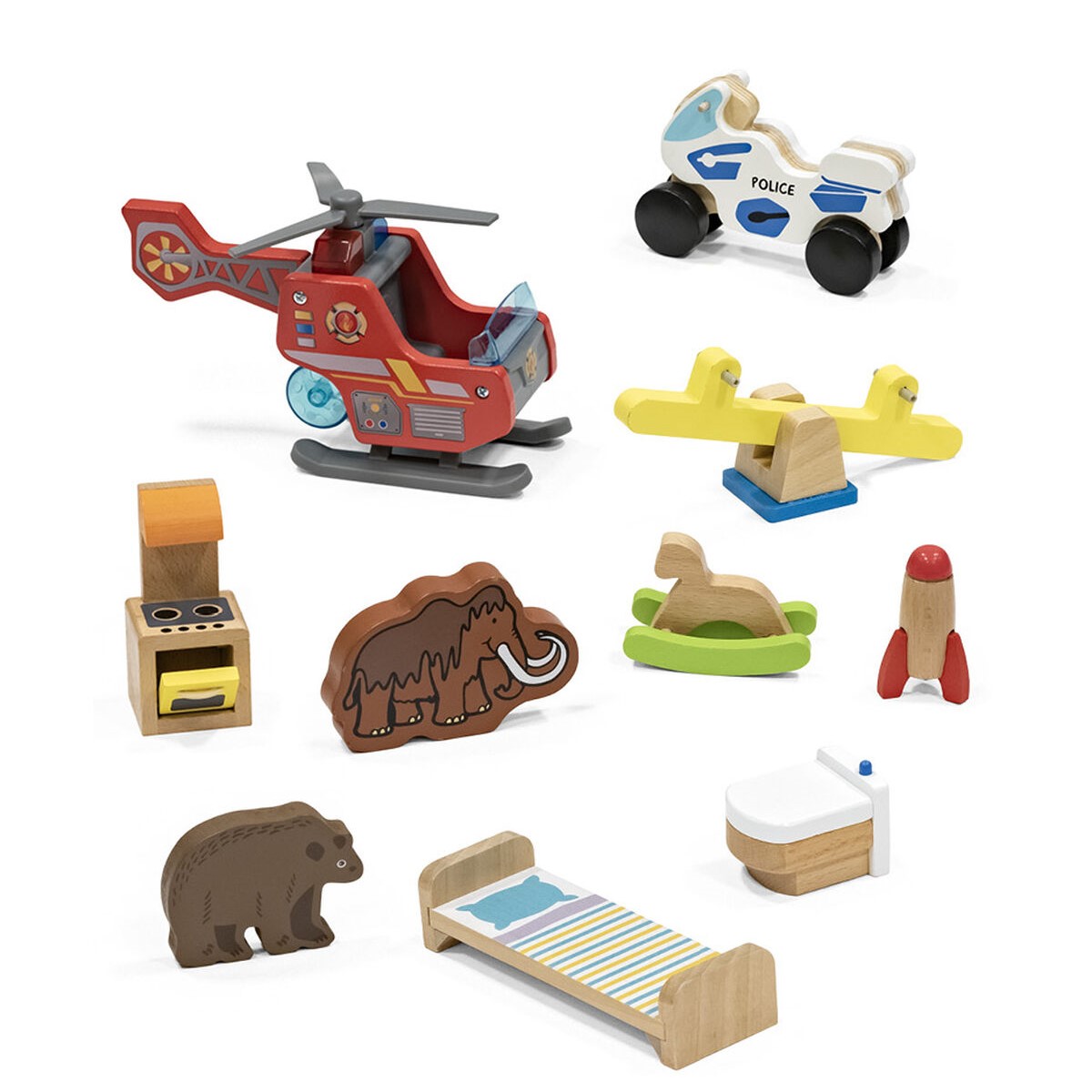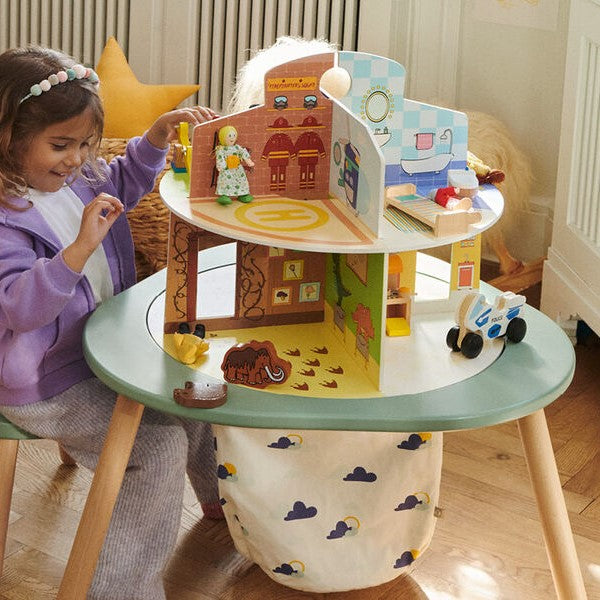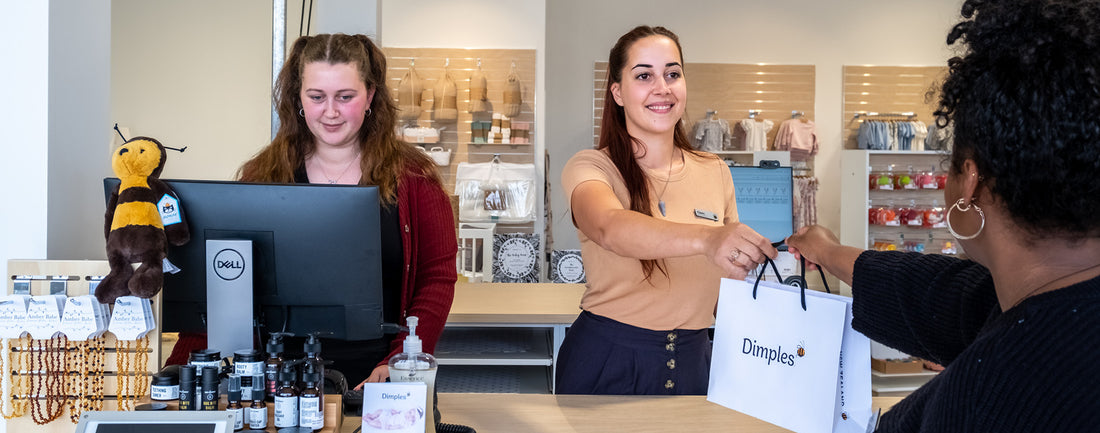Stokke MuTable Toys
Stokke MuTable Toys
SKU:629201
In stock
Couldn't load pickup availability
Overview
Overview
Fills your kid's play house with life
Let your budding designer make their play house a home with the Stokke® MuTable™ Toys. The set includes 10 beautiful, colorful pieces of a variety of learning toys with furniture, animals, helicopter and many more. Your toddler can use their imagination to make room for everyone & set the scene for all the exciting stories they'll tell. Creating scenarios that resemble real life encourages children to talk about thoughts and feelings. Imaginary games helps children to make sense of their surrounding and fuel their creativity. This also helps children to develop social skills, problem solving, organizational skills and of course, fine motor skills. Pair up the Stokke® MuTable™ Toys with the Stokke® MuTable™ Play House for hours of playing and learning
- Designed for the Stokke® MuTable™ Play House
- 10 high quality kids learning toys, animals & furniture to fill your play house with life
- Toys encourage imaginative play to fuel creativity and to learn though play
- Produced by Hape
- Free form harmful substances
- From 3 year old
What's Included
What's Included
Technical Specification
Technical Specification
Delivery and Returns
Delivery and Returns
- Delivery: Free within NZ on orders over $100 (excluding bulky items) or $8 standard shipping
- Returns: Accepted within 14 days of receipt with proof of purchase
- Some items are excluded from returns including sale items, hardware, car seats, prams, monitors and personal items - please click here for the full list.
Share this product
Recently Viewed Products
Related Blogs
The Play Table Packed with Possibilities
Harness the power of early learning with the Stokke® MuTable that grows and adapts just as quickly as your child’s imagination! Play isn’t just fun – it’s also the foundation of learning. A children’s play table gives little ones the perfect space to explore with both hands and minds. From building the MuTable Play House (which comes complete with dolls and toys) to tackling puzzles or inventing animal adventures with play dough, every activity sparks creativity, problem solving, and growth. The MuTable is designed to grow with your child. It comes with three double sided activity boards, each one offering new adventures and challenges as your little one develops. From quiet solo play to lively group fun, there’s something to spark curiosity at every stage: A wooden cover that flips to become a blackboard for doodles, scribbles, and first masterpieces A reversible landscape board featuring a peaceful nature setting on one side and a bustling city scene on the other A bricks board with surfaces for both small and large blocks, giving building projects endless possibilities The MuTable chairs are perfectly sized for little ones to sit comfortably while they draw, build, and create. Cleverly designed to grow with your child, the seat height can be adjusted as they get bigger. When it’s time for a change, simply remove the backrest and the chair transforms into a sturdy stool that can hold up to 100kg. Why a child’s play table is a game changer A fun zone for kidsA child-sized play table and chair set creates a safe, comfortable space just for them. It encourages proper posture while giving little ones their very own place to play, build, and create. Nurtures creativityFrom drawing and painting to building towers or sculpting playdough, a play table becomes the stage for endless adventures. With the MuTable’s colourful, tactile boards, your child can dive into imaginative worlds every day... saving the city, exploring nature, or inventing their own stories. Encourages independenceEasy access to their own table and chairs means children can jump into play whenever they choose. This sense of ownership helps build problem-solving skills, self-sufficiency, and confidence. Brings kids togetherA play table is also a hub for teamwork. Kids can play side by side, sharing space while still enjoying their own chair. This is perfect for collaboration, cooperation, and making memories. Made to lastCrafted from premium natural wood, the MuTable and chairs are built for years of use, backed by a 3-year warranty. Softly curved edges ensure safety, while the award-winning design blends seamlessly with any home. Grows with your childDesigned to adapt as your little one gets older, both the table and chairs come with leg extensions to raise the height as needed. The clever design means the MuTable keeps up with every stage of childhood.
Learn moreEncouraging play time with your little one
Encouraging play time with your little one Playtime with your children is one of the most powerful ways to contribute to your child’s development. It is so important to have these playful interactions with your little one early on in the Newborn stage. To build a connection between you and your Newborn this form of interaction doesn’t require much more than using your face, voice and body to keep them entertained. You will begin to learn more about one another and start to see you baby’s personality come to light. You may feel in the beginning as if this form of play is a little one sided, however through these interactions you are helping with their cognitive and sensory development. They are beginning to build connections in their brains which will help them to understand different words. Beginning by making funny faces and smiling, singing, telling nursery rhymes, and reading to them are all the simplest and most effective ways to interact with baby. Introducing your baby to new materials that they can touch and move around is another great way to stimulate their brains. Allowing them to do things as simple splashing around water during bath time is a great way of helping them to explore their senses. During these early stages of development you are the most important tool for your baby’s entertainment however Dimples also sells a range of interactive toys in various forms to aide when it comes to play time between you and your little one. Toys to add when it is play time. The Jelly Cat books follow delightful little characters through a variety of different stories. Story time with your little one is a great way to interact and stimulate their mind. Changing the pitch and tone of your voice will help with baby making different connections in their brain. Play time can require a lot of energy for baby so you will notice they can quickly get tired. Baby will signal they are getting tired by looking away from you, they may become disinterested or even grumpy. After your baby is rested, they will signal when they are ready to play again by looking towards you, making noises as well was wiggling their arms and legs about. Evolving play time as your child grows As baby grows up, they are learning more every day. They are beginning to develop new skills therefore it is important to evolve your playtime routine. Between the ages of one and two your toddler will begin to explore the world and will begin to gain more of an idea on how things work. During this age it is great to have a balance between structured and unstructured play. Unstructured play is allowing your child to explore what strikes their own interest. It is through unstructured play where you will learn the most about your child and what they are attracted to. Here it is best to take a step back and watch your little one’s imagination grow. Structured play is a great way for you child to learn in a more organised setting, this may involve activities such as swim lessons, musical groups, dance classes. Structured play will help to broaden your toddler’s knowledge and physical skills, this often takes part within a group setting. Play within a social setting is important as it helps to develop social and communication skills as well as teach them about sharing. It is a good idea when buying toys to keep you little one entertained to consider buying toys that are educational, therefore you are ensuring that not only are they having fun but they are also expanding their knowledge. Dimples offers a range of educational yet entertaining toys to make sure you little one’s mind is always learning. The Stacking Ring Tower from Mushie is made from 100% non-toxic BPA and phthalate free plastics, they help to refine bubs organisational and motor skill all while being fun for them to play and engage with. Screen time is an important factor to be aware of. Putting your child in front of a screen is an easy solution when needing to keep your little one entertained so you can get certain tasks done. However, it important to consider balance when it comes to how much screen time you are allowing you child to have. Screens only show a two-dimensional world, it doesn’t offer the same sensory experience that you child will gain when they are out and about. Play time away from the screen allows your child to explore all five senses and use their imagination, you will notice their knowledge broadening quickly the more they venture into the world.
Learn moreIntroducing Our Virtual Shopping Service
As a busy parent it can be hard to find the time to get out to the shops. Or perhaps you’re in hospital post-birth and realise you need some more essentials in tiny sizes. Of course there’s always the option to shop online, but sometimes that just doesn’t cut it. Perhaps you want to see a product in action, or ask a question, or get advice . . . You can now book in to have a video call with our in-store team. They can show you close ups, give you a demo or help you choose when you’re confused by all the options. It’s the perfect option for busy parents. And we’ve made it easy with an ONLINE BOOKING SYSTEM . Book a Virtual Shopping Appointment Here's why our virtual shopping service is a game-changer: Personalized Assistance: Need help finding the right stroller, cot, or baby monitor for you? Our team of knowledgeable experts can help. Virtual Tours: Explore our store virtually with guided tours led by our experienced staff. From nursery furniture setups to the latest babywear arrivals, our virtual tours give you an immersive shopping experience without leaving your home (or birthing unit). Shop with confidence: Once you've made your selections, you’ll have the peace of mind to buy online. Then you can have your purchase delivered to your door or arrange a Click & Collect. Whether you're a first-time parent or a seasoned pro, we're here to make your parenthood journey a little bit easier. Embrace the convenience of our virtual shopping service and enjoy a stress-free shopping experience like never before.
Learn moreBaby Comforters: What Are They, and How To Introduce Them
There’s something very special about watching your baby snuggle into their favourite little blanket or soft toy. For many little ones, a comforter (or blankie) becomes more than just a bedtime accessory - it’s a trusted friend that brings a sense of calm and reassurance through every new stage of growing up.
Learn more














